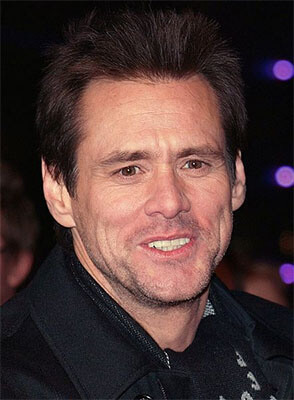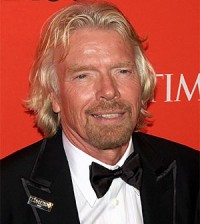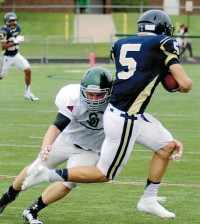Jim Carrey Success Story – From Struggling Dyslexic to Comedy Movie Mogul
- Tweet
- Pin It
-
Actor and comedian James Eugene Carrey was born on January 17, 1962, in Newmarket, Ontario, Canada. Carrey got his start with a spot doing stand-up at a Toronto comedy club when he was just 15 years old. By 1979, he had left the factory job as a janitor he had taken in 1978 to help support his family and was making his living as the opening act for successful comics Buddy Hackett and Rodney Dangerfield.
In 1983, Carrey headed west to Hollywood where he starred in a made-for-television movie called Introducing…Janet. Carrey’s appearances on TV in programs such as The Duck Factory and Jim Carrey’s Unnatural Act (1991) led to a regular role on the hit comedy In Living Color.
Carrey’s big screen debut came with 1984’s Finders Keepers, but he didn’t find success until he played the titular role in the 1994 comedy Ace Ventura: Pet Detective. From there, Carrey’s expressive face, expert mimicry skills and physical brand of comedy kept the hits coming. He followed with The Mask (1994), Dumb andDumber (1994), Ace Ventura: When Nature Calls (1995), Batman Forever (1995), The Cable Guy (1996) and Liar Liar (1997).
Jim had a rough start in life though. In his early years at school he describes himself as quiet and having no friends. Yet, he discovered that he could make friends by making people laugh. That was his turning point. But the results weren’t all positive. One teacher wrote on his report card: “Jim finishes his work first and then disrupts the class.” At home, he thoroughly enjoyed making faces and mimicking in his mirror.
His ambition showed when he began to think beyond entertaining his fellow students. At age ten he sent his resume’ to actress/comedienne Carol Burnette, hoping to be discovered.
It wasn’t all up hill for Jim though. First, he had to work around his learning disability, dyslexia, in order to succeed in school. He did this by developing a phenomenal memory.
Although his dad tended to encourage his craziness, his mom was alarmed and often sent him to his room. No problem – just more time to practice in front of the mirror.
Money was another hurdle. His family lived in a rough district with lots of low-rent townhouses. By the tenth grade he was trying to juggle eight-hour night shifts at the factory with school during the day. He was so exhausted that he couldn’t understand what his teachers were talking about. He didn’t have any friends at school and feared that anyone getting close might find discover his embarrassing poverty. With little learning and no relationships, he felt that school was getting him nowhere. He called it quits at 16.
His family decided that their surroundings were taking them the wrong direction, so they packed up and moved to Canada with no job in sight. His parents and two siblings lived in a beat-up yellow Volkswagen camper van for a full eight months, parking in campgrounds.
You can imagine his emotional baggage – the loss of his teen years, feeling intellectually backward, the embarrassment and hardship of poverty. Yet, perhaps that feeling of inferiority paved the way to his success by making him feel that he had to try harder than others. As one biographer wrote:
“His greatest bursts of creativity were born out of desperation; so was his remarkable willingness to take risks.”
His first public performance was in Toronto’s Yuk-Yuk Comedy Club. Eleanor Goldhar, publicist for the club, noticed Jim’s intensity. When he wasn’t performing, he was quiet compared to the other comedians. In her own words,
“You could see him watching and listening – observing closely, paying attention to everything that was going on.”
Jim says that he’s always believed in magic. When he wasn’t doing anything in Hollywood, he would drive up and sit in his car on Mulholland Drive, look out at the city, stretch out his arms, and say, “Everyone wants to work with me. I’m a really good actor. I have all kinds of great movie offers.”
He would just repeat these things over and over, literally convincing himself that he had a couple of movies lined up. He’d drive down that hill, ready to take the world on, going, “Movie offers are out there for me, I just don’t hear them yet.”
He now reflects that it was like total affirmations, antidotes to the stuff that stems from his family background.
Around 1990, when Jim Carrey was a struggling young Canadian comic trying to make his way in Los Angeles, he drove his old Toyota up to Mulholland Drive. While sitting there looking at the city below and dreaming of his future, he wrote himself a check for $10 million, dated it Thanksgiving 1995, added the notation “for acting services rendered,” and carried it in his wallet from that day forth.
The rest, as they say, is history. Carrey’s optimism and tenacity eventually paid off, and by 1995, after the huge box office success of Ace Ventura: Pet Detective, The Mask, and Dumb & Dumber, his asking price had risen to $20 million per picture.
When Carrey’s father died in 1994, he placed the $10 million check into his father’s coffin as a tribute to the man who had both started and nurtured his dreams of being a star.
Sources: Biography.com, dyslexiahelp.umich.edu, www.savvyintrapreneur.com/2008/07/write-yourself-check-right-now.html




